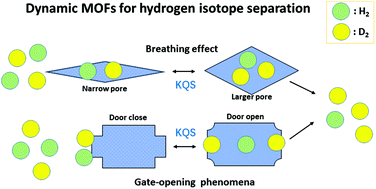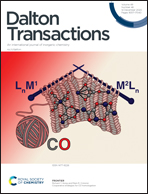Dynamic metal–organic frameworks for the separation of hydrogen isotopes
Abstract
Reversible structural transformation upon exposure to external stimuli can lead to breathing effect or gate-opening phenomena for dynamic metal–organic frameworks (MOFs), which endow them with excellent gas separation performance. The separation of hydrogen isotopes remains a huge challenge due to their nearly identical physical and chemical properties. The unique feature of dynamic MOFs, especially structural transition triggered by isotopes or by temperature, maximally enhances kinetic quantum sieving and contributes to the highly selective separation of hydrogen isotopes. Herein, we present some examples for the separation of hydrogen isotopes based on dynamic frameworks, and we expect to attract increasing attention to this research field.

- This article is part of the themed collection: 2020 Frontier and Perspective articles


 Please wait while we load your content...
Please wait while we load your content...